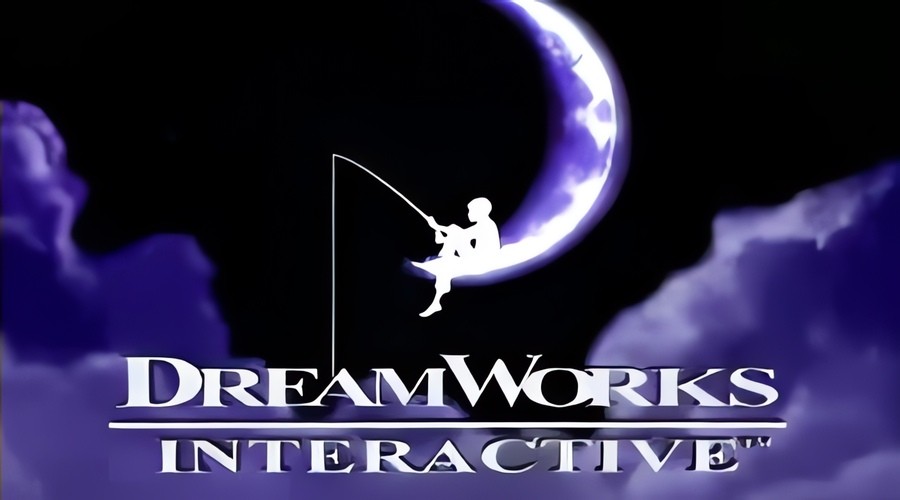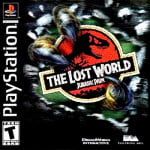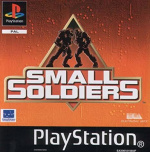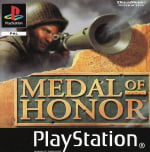
If you're an avid film fan, it's likely you'll recognize the DreamWorks logo. The iconic image of a small boy fishing on the side of a crescent moon dates all the way back to the studio's formation in 1994 and has appeared at the start of almost every DreamWorks-related piece of media ever since its initial creation.
The DreamWorks co-founder Steven Spielberg was behind the original concept, which was conceived as a throwback to the golden age of Hollywood. However, it was the illustrator Robert Hunt, storyboard artists from Kaleidoscope Films, and a group of animators at ILM who designed the finished version that made it to the screen. The resulting logo was an evocative image that has stuck in the minds of audiences for its nostalgic design, but if you happened to play a lot of DreamWorks Interactive games you might also remember it for other more psychologically-damaging reasons.
In 1997, when DreamWorks Interactive released The Lost World: Jurassic Park on PlayStation 1, the development team decided to have a little fun at the expense of the player. As the game loads up, the familiar DreamWorks logo appears with the Moon Boy again fishing on the edge of a crescent moon, but this time around, he actually catches something. Getting to his feet, he excitedly exclaims, "I've got something", when all of a sudden, one of the game's velociraptors drags him off-screen to a grisly fate.
For many players back in the day, this came as a total surprise with many wondering how DreamWorks Interactive had managed to get away with killing off the company's beloved mascot, but in actuality, this was just the beginning of the poor boy's troubles, as evidenced by the studios' later releases.
Over the next few years, depending on the game, animators at the company subjected the mascot to being tied up by members of the Commando Elite (Small Soldiers), attacked by dragons (T'ai Fu: Wrath of the Tiger), and suffering from various forms of parachute malfunction (Medal of Honor/Medal of Honor: Underground).
According to former employees of DreamWorks Interactive, the producer Patrick Gilmore and animator Tim Goodwin were likely the ones responsible for pitching these irreverent intros. However, a range of different people including Derek Nansen, Ken Angliongto (Medal of Honor), and Lionel Voillat (Medal of Honor: Underground) were at various points tasked with coming up with the ideas for animations and bringing them to life.
When we contacted Nansen over social media, he told Time Extension, "I did a few of the logos. I think it was the early one [for] Lost World and Dilbert's Desktop Games. Maybe a few others. I was there from 1996 to October of ‘99. [...] Mine were [always] fairly off-the-cuff. I would animate a few ideas and show them [to the team] and usually one of them was a hit."
Ken Angliongto, meanwhile, told Time Extension, "The responsibility was passed around. It could have been any of the animators who were working on the project at the time. When I worked on the Parachute Kid for Medal of Honor, our producer Peter Hirschmann gave the idea of the parachute, Sunil Thankamushy and I worked on the animation. I don't think one person thought of it. "
What's so fascinating about these idents is that, contrary to what you might expect, DreamWorks as a company was fully behind these twisted takes on its logo, even supplying the assets to be used in these new animations. Not a single animator remembered any internal controversy as a result of these idents, with the main film & animation studio simply letting the game developers do their own thing.
"DreamWorks had a central graphics department that housed all of the logo assets," the associate producer Stephen Townsend told us, "And each individual arm would be allowed to modify it for products they were making. We provided the key asset files to our animators and they would create them. The main studio gave us a lot of freedom to just be creative. The animators took pride in getting the opportunity to create those logos. Back then they were using 3D Studio Max and Alias|Wavefront."
Given how risk-averse companies are today, it's hard to imagine a parent company giving a developer this amount of freedom to experiment with its branding today. Nevertheless, the fact that we're still talking about it all these years later shows just how effective it was as a marketing technique to grab the player's attention.
Today, it still pops up in conversation whenever someone mentions the DreamWorks logo or video game logos in general, with many admitting to being traumatized upon watching some of the more gruesome ordeals that the young boy had to contend with.








